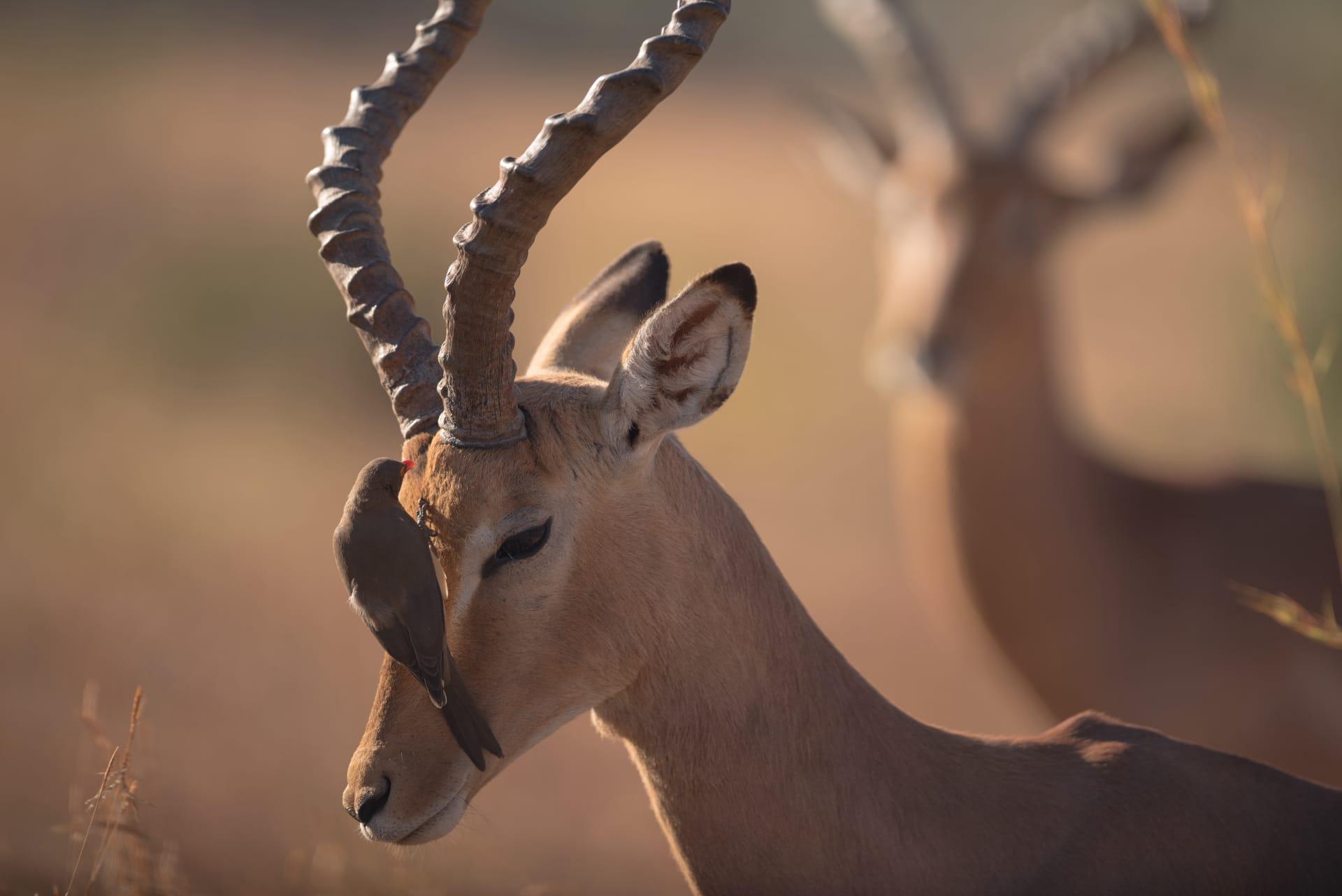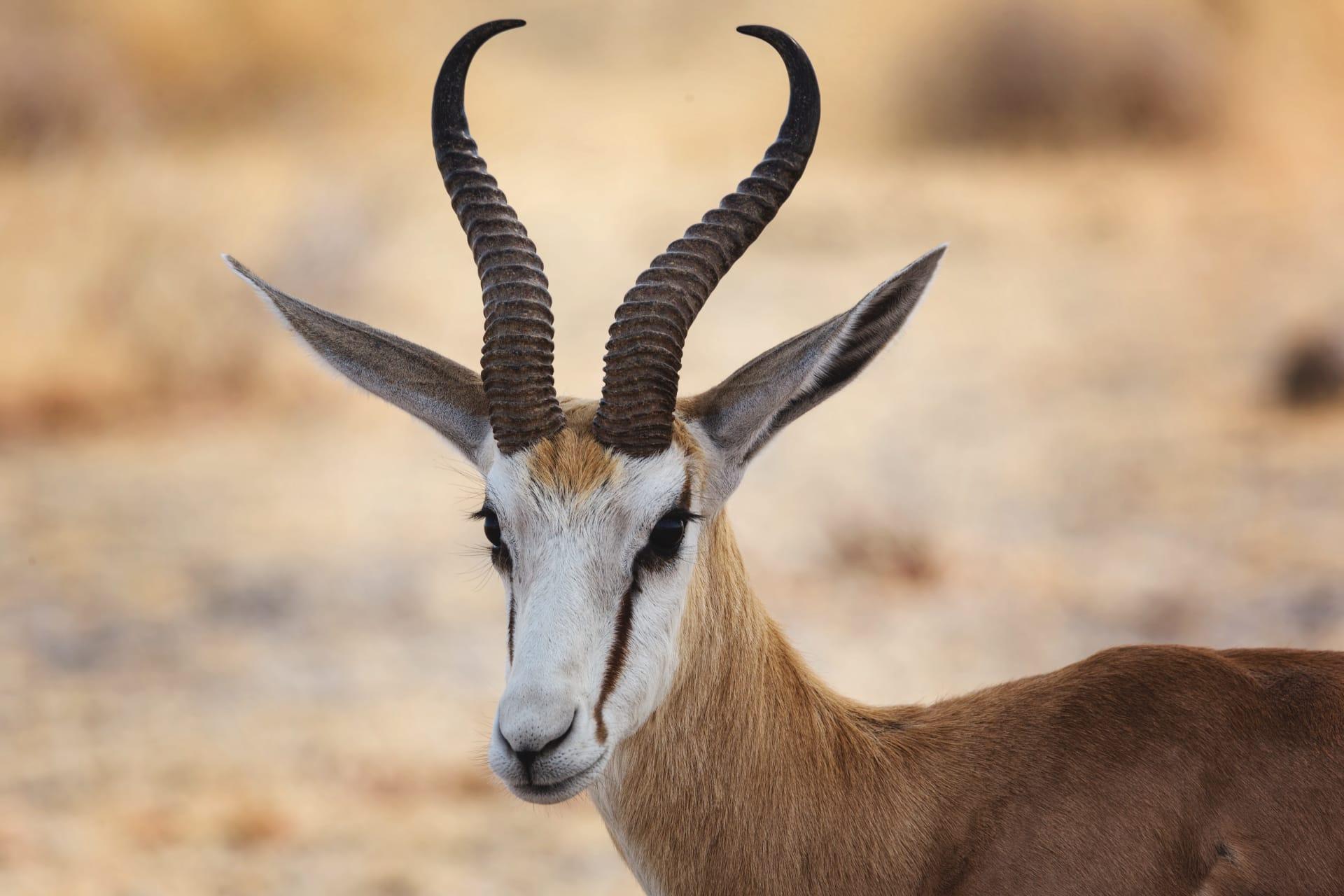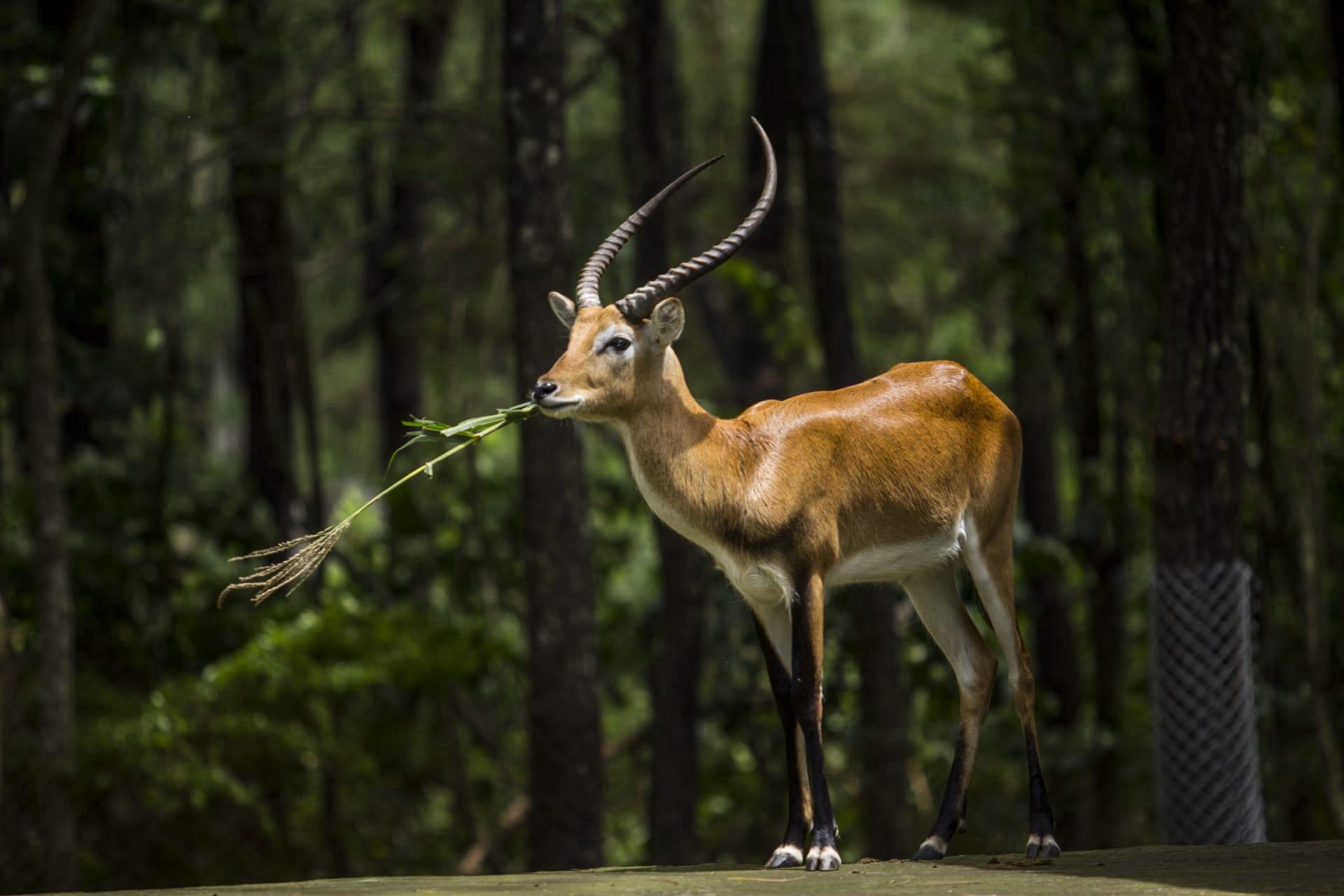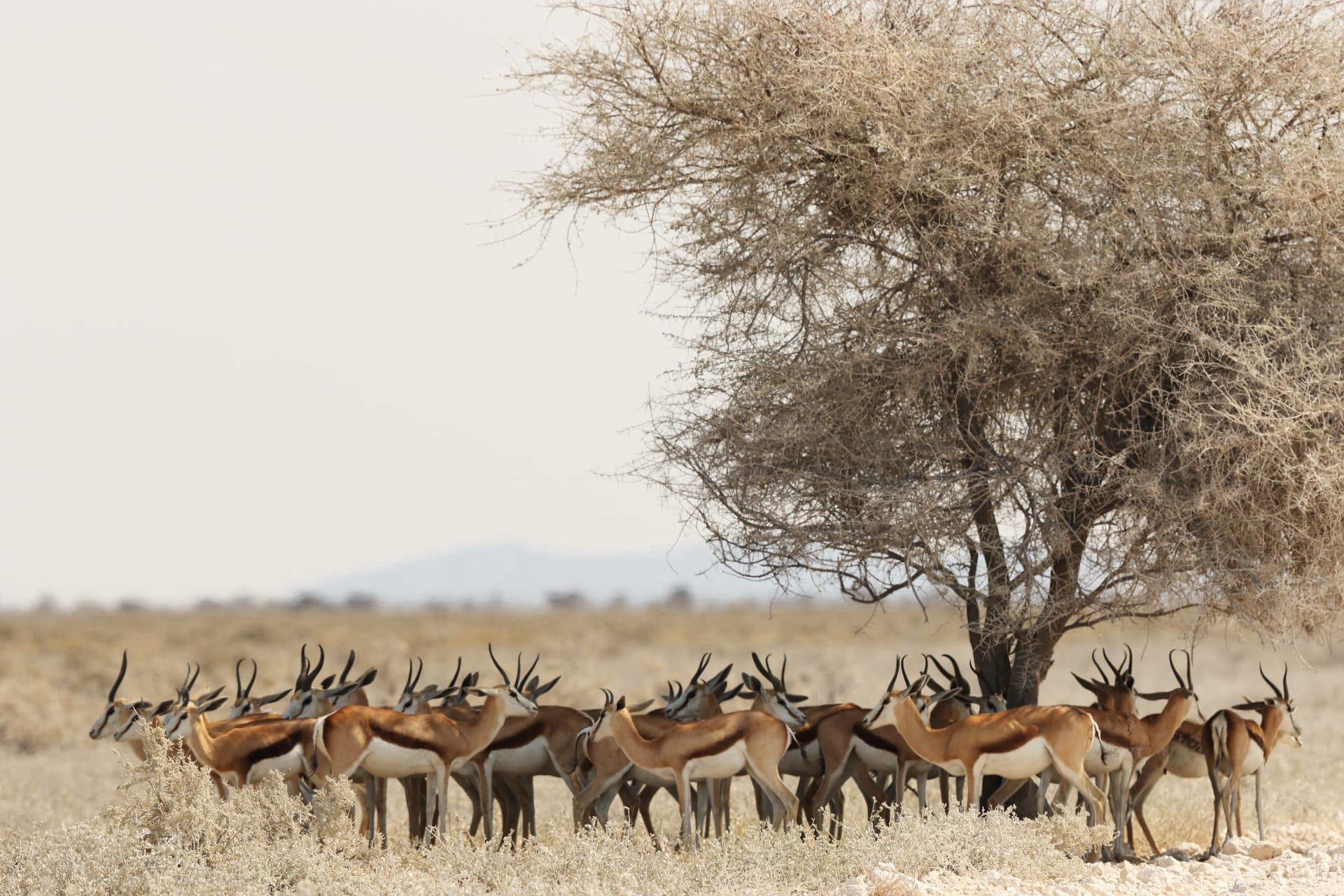Gazelle
- Home /
- Mini Encyclopedia /
- Animal /
- Gazelle
1
Gazelles, a genus within the Bovidae family, are known for their slender build and swift movements. This genus, scientifically named 'Gazella,' comprises numerous species, each with distinct characteristics. Key species include the Thomson's gazelle, Grant's gazelle, and the dama gazelle. These species vary in size and markings, but all share the graceful and agile nature that gazelles are celebrated for. For instance, Thomson's gazelle, often seen in documentaries, is smaller and has a distinctive black side stripe, while the dama gazelle, larger and more robust, boasts an array of colorations from white to red.
Gazelles are predominantly found in Africa and Asia, thriving in a variety of habitats such as savannas, grasslands, and deserts. The Thomson's and Grant's gazelles are primarily located in East Africa, roaming the vast savannas of Tanzania and Kenya. The dama gazelle, now critically endangered, once roamed across Northern Africa but now is confined to fragmented populations in Chad, Mali, and Niger. Their distribution reflects their adaptability to different environments, from the dry Sahel region to the lush plains of the Serengeti.

2
Question: Do gazelles only use their speed as a defense mechanism against predators?
Answer: While gazelles are renowned for their speed, capable of sprinting up to 60 miles per hour, their survival strategy is more complex. Gazelles employ a technique known as 'stotting' or 'pronking,' where they leap high into the air with stiff legs. This behavior, often observed when a predator is nearby, serves as a warning signal to the herd and a display of strength to predators. It communicates that the gazelle is alert and strong, potentially discouraging the predator from pursuing a chase it's unlikely to win.

3
Gazelles have evolved several strategies to thrive in their environments. Apart from their celebrated speed, they possess keen eyesight and hearing, essential for detecting predators. They are also highly social animals, forming herds that can vary from a few individuals to hundreds. This social structure provides safety in numbers, as multiple gazelles can monitor for threats. Their diet, mainly consisting of grasses and leaves, allows them to survive in areas with sparse vegetation.
In addition to their physical attributes, gazelles have developed unique adaptations to harsh climates. For instance, they can reduce their water intake during dry seasons, deriving moisture from the plants they eat. Some species, like the dama gazelle, have a light coat that reflects sunlight, helping them manage heat in desert environments. These survival strategies underscore the gazelle's ability to adapt to a wide range of ecological conditions.

4
In their ecosystems, gazelles play a crucial role in maintaining balance. As herbivores, they aid in controlling vegetation growth, which in turn affects the distribution and health of other species and the landscape. Their grazing patterns help shape the vegetation structure, promoting biodiversity.
Gazelles are also key prey species for large predators such as lions, cheetahs, and leopards. Their presence is vital for the survival of these carnivores, maintaining the natural predator-prey dynamics essential for ecological equilibrium. Additionally, their migration patterns can influence the movement and behavior of other species, highlighting their integral role in the ecosystem's health and functionality.

5
Film: "The Life of Gazelles" is a notable documentary produced in the United Kingdom in 2018. This film offers an intimate look into the lives of gazelles in the African savanna, showcasing their survival tactics, social behaviors, and the challenges they face from predators and environmental changes. It provides viewers with a deeper understanding of these graceful creatures and their importance in the ecosystem.
Book: "Gazelles of the African Plains" is a comprehensive guide written by American zoologist Sarah Langford in 2020. This book delves into the different species of gazelles, their habitats, behavior, and conservation status. Langford's work is renowned for its detailed observations and vivid photography, making it a valuable resource for wildlife enthusiasts and researchers.
Book: Another significant contribution is "Running Wild: The Gazelles of Asia" by British naturalist David Attenborough, published in 2016. This book explores the lesser-known species of gazelles found in Asia, their unique adaptations, and the threats they face due to habitat loss and hunting. Attenborough's engaging narrative style and comprehensive research provide readers with an insightful perspective on these often-overlooked species.